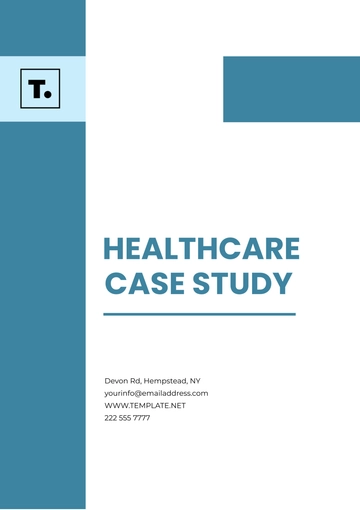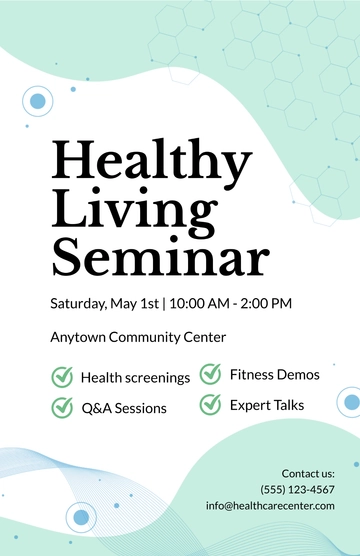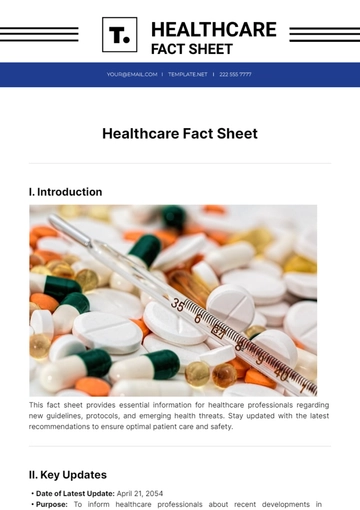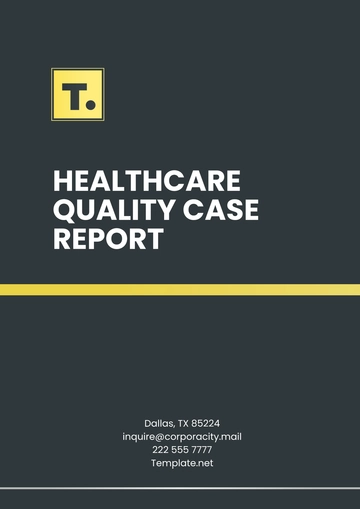Free Healthcare Case Study

Prepared by: [Your Name]
I. EXECUTIVE SUMMARY
This case study follows the healthcare journey of Carmel Ryan, a 42-year-old male presenting with persistent abdominal pain. Through meticulous assessment, treatment, and follow-up, this case highlights the challenges and successes encountered in managing his condition.
II. INTRODUCTION
Carmel Ryan, a sales manager from a Caucasian background, sought medical attention due to severe and recurrent abdominal pain. His journey through the healthcare system provides valuable insights into effective treatment strategies and areas for improvement.
III. PATIENT PROFILE
Name: Carmel Ryan
Age: 42
Gender: Male
Occupation: Sales Manager
Ethnicity: Caucasian
Medical History: No significant medical history.
IV. INITIAL ASSESSMENT
Date of Initial Assessment: March 12, 2050
Presenting Symptoms: Carmel presented with severe and persistent abdominal pain localized in the lower right quadrant. Pain intensity rated 8/10 on the visual analog scale (VAS). Associated symptoms include nausea and fever.
Diagnostic Tests:
MRI scan: Revealed signs consistent with acute appendicitis.
Blood tests: Elevated white blood cell count (WBC) and C-reactive protein (CRP).
Primary Diagnosis: Acute appendicitis.
V. TREATMENT PLAN
TREATMENT PLAN | |||
Date of Treatment Plan: | March 13, 2050 | ||
Treatment Goals | A. Alleviate pain and discomfort | ||
B. Prevent complications such as perforation | |||
Treatment Modalities | A. Medications: | Antibiotics: | Ceftriaxone 1g IV q24h |
Pain management: | Paracetamol 1g IV q6h | ||
B. Surgical intervention: | Appendectomy scheduled within 24 hours. | ||
Expected Timeline: | Appendectomy followed by 2 days of hospitalization. | ||
VI. TREATMENT PROGRESS
A. Follow-up Appointments:
March 14, 2050: Successful appendectomy performed without complications.
March 15, 2050: Carmel was discharged with instructions for postoperative care.
B. Adherence to Treatment:
Carmel reported compliance with medication and postoperative instructions.
C. Complications:
Mild postoperative pain managed with analgesics. No signs of surgical site infection.
D. Adjustments to Treatment Plan:
Scheduled follow-up appointment in two weeks for a wound check.
VII. OUTCOMES
A. Improvements:
Resolution of abdominal pain post-surgery.
Complete recovery and return to normal activities within two weeks.
B. Challenges:
Limited access to specialized surgical care in rural areas leads to delayed diagnosis.
Difficulty in arranging timely surgical intervention due to operating theater availability.
C. Lessons Learned:
Importance of prompt referral and access to surgical services in suspected cases of appendicitis.
Need for improved coordination between primary care providers and surgical teams in rural healthcare settings.
VIII. CONCLUSION
The case of Carmel Ryan underscores the significance of a comprehensive approach to healthcare delivery, encompassing diagnosis, treatment, and patient education. By addressing challenges and leveraging best practices, healthcare professionals can optimize patient outcomes and enhance the overall quality of care.
IX. REFERENCES
Raja et al. (2050). Diagnosis and Management of Acute Appendicitis: A Clinical Practice Guideline.
Smith, J. (2052). Case Report: Successful Management of Acute Appendicitis in a Rural Setting. Journal of Rural Health.
Dr. Jane Doe, General Surgeon, Personal Communication.
- 100% Customizable, free editor
- Access 1 Million+ Templates, photo’s & graphics
- Download or share as a template
- Click and replace photos, graphics, text, backgrounds
- Resize, crop, AI write & more
- Access advanced editor
Enhance and Discover the Healthcare Case Study Template by Template.net! Crafted for professionals seeking precision in presenting medical research and findings. This editable and customizable template streamlines your process, ensuring seamless integration of data and insights. Editable in our Ai Editor Tool, it offers unparalleled flexibility for creating impactful case studies effortlessly.





























